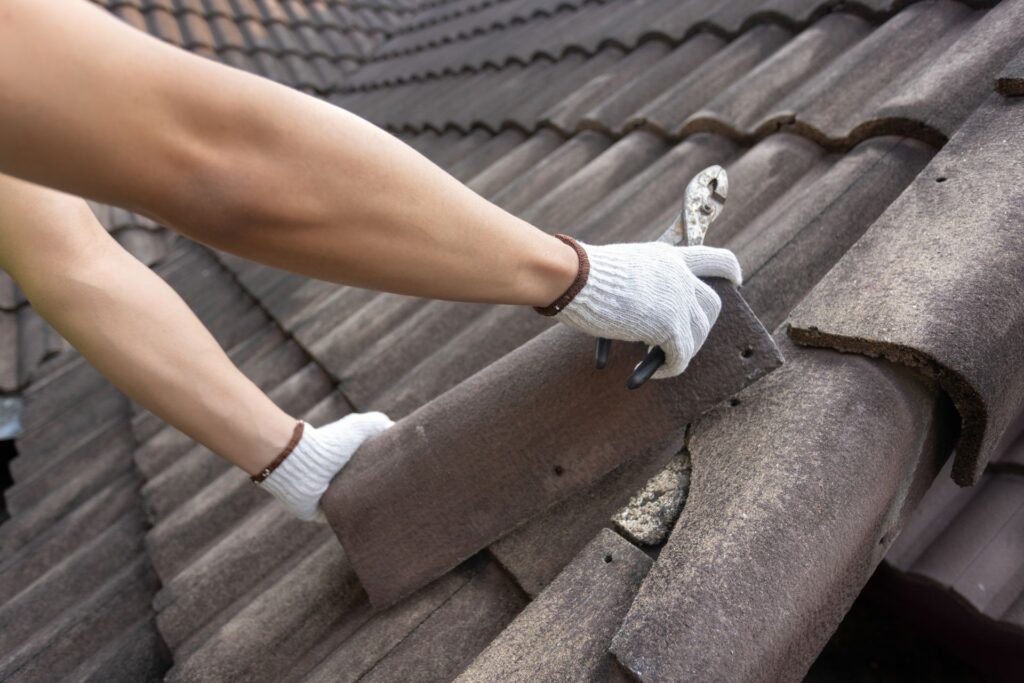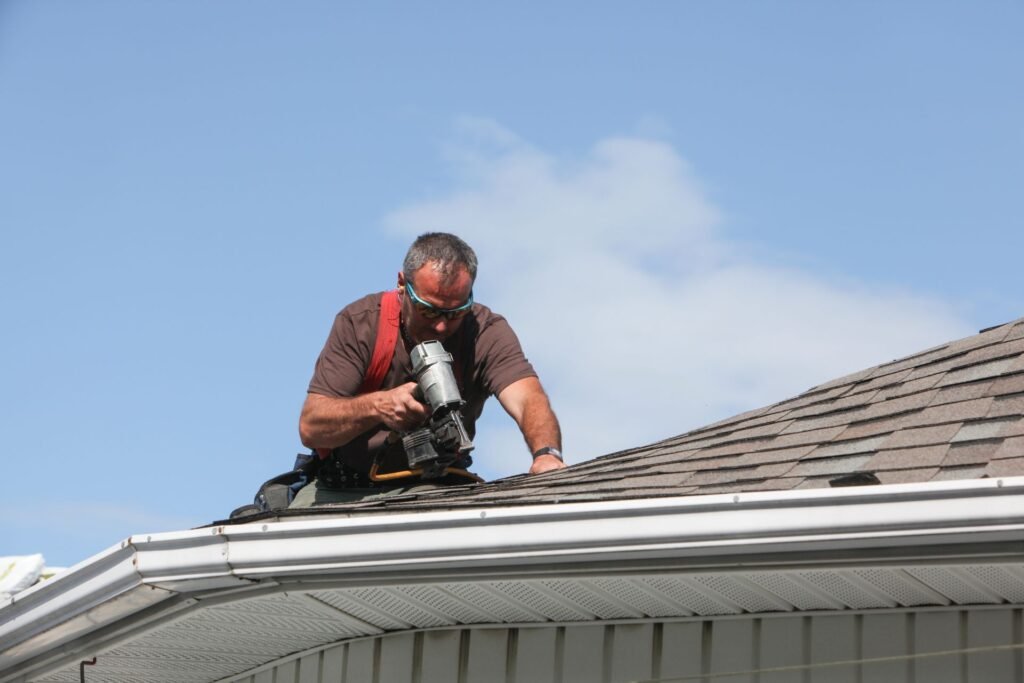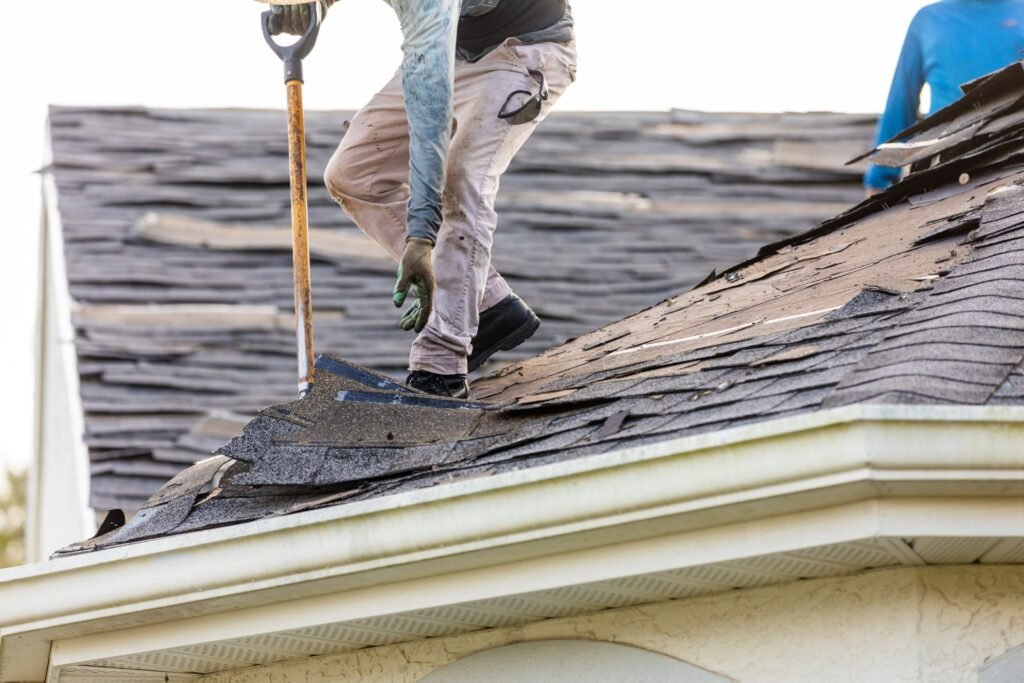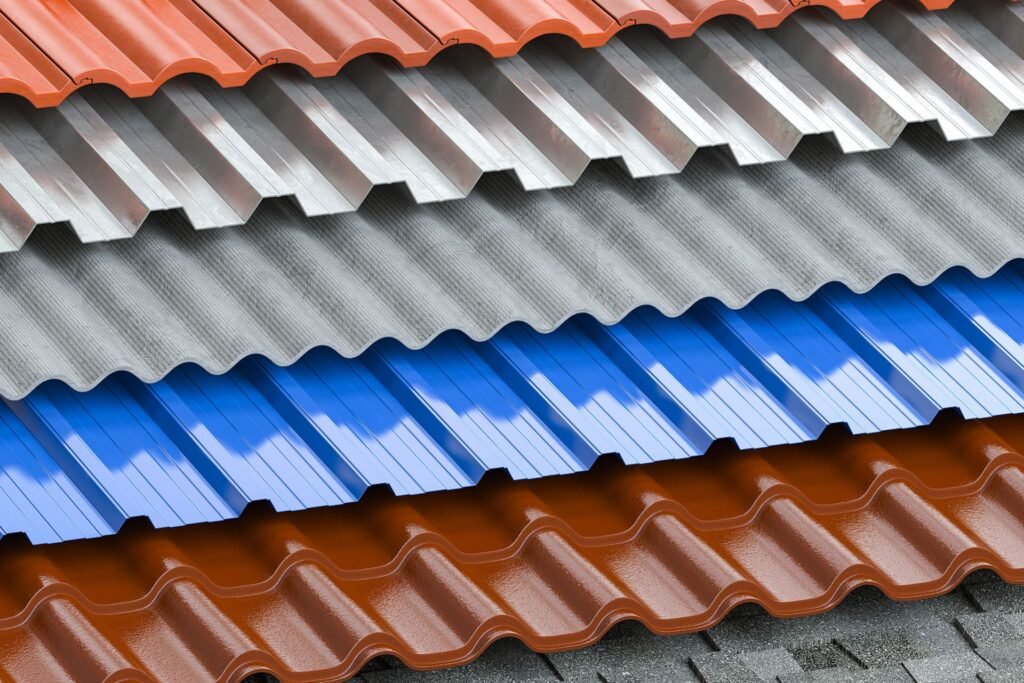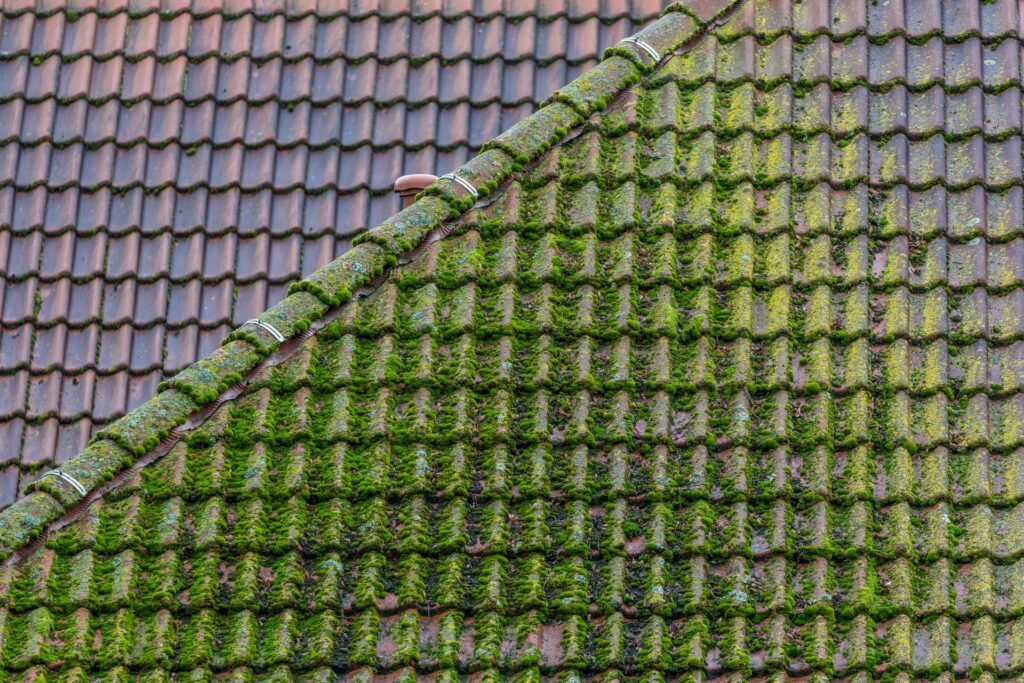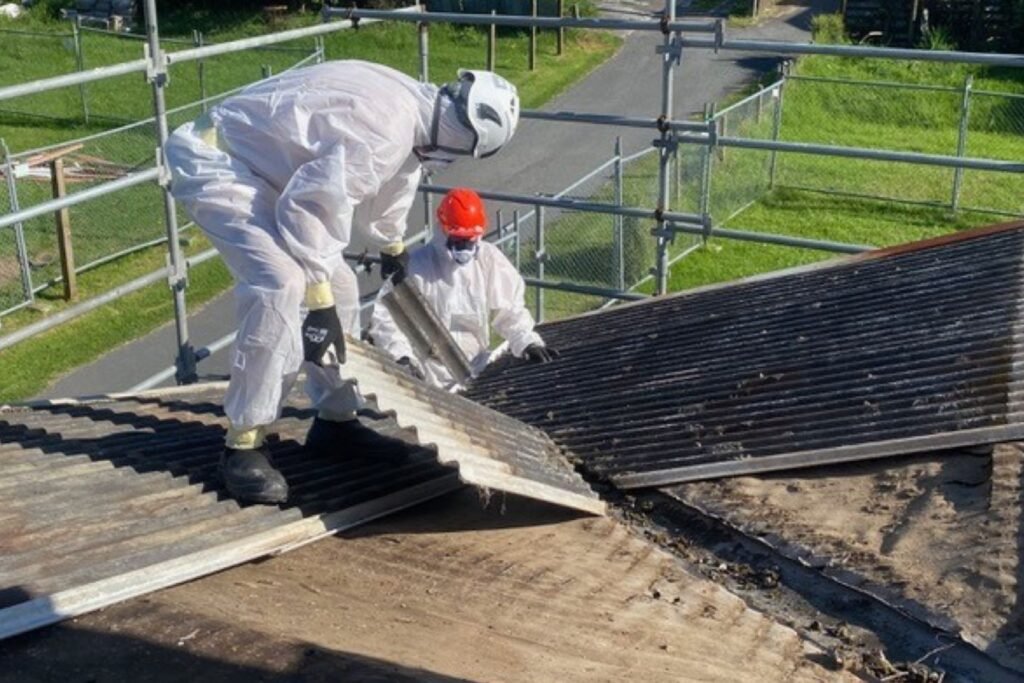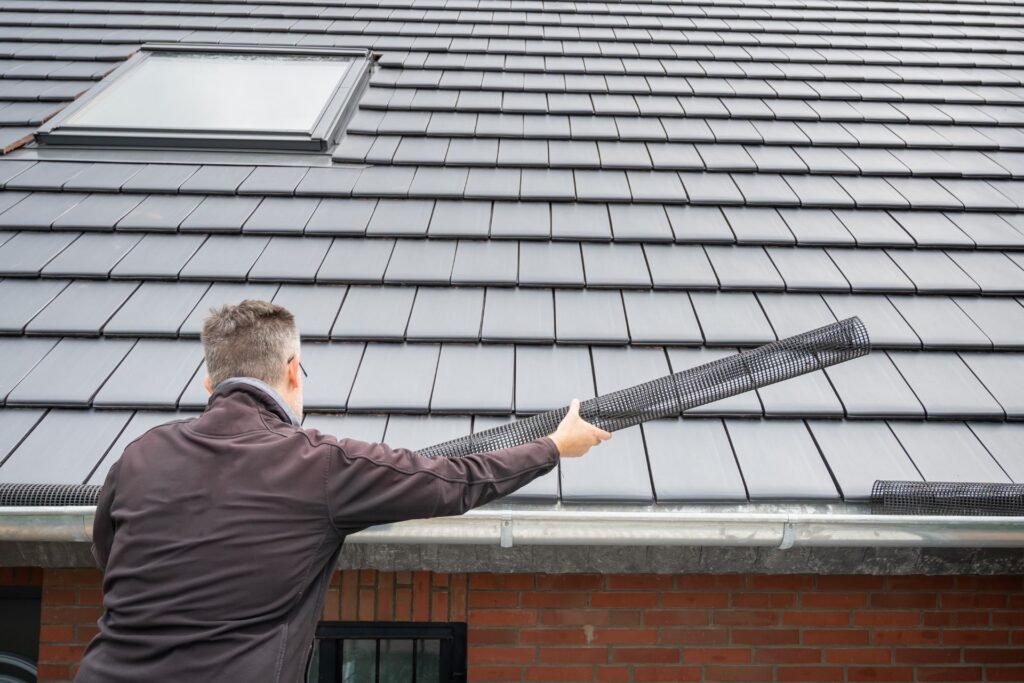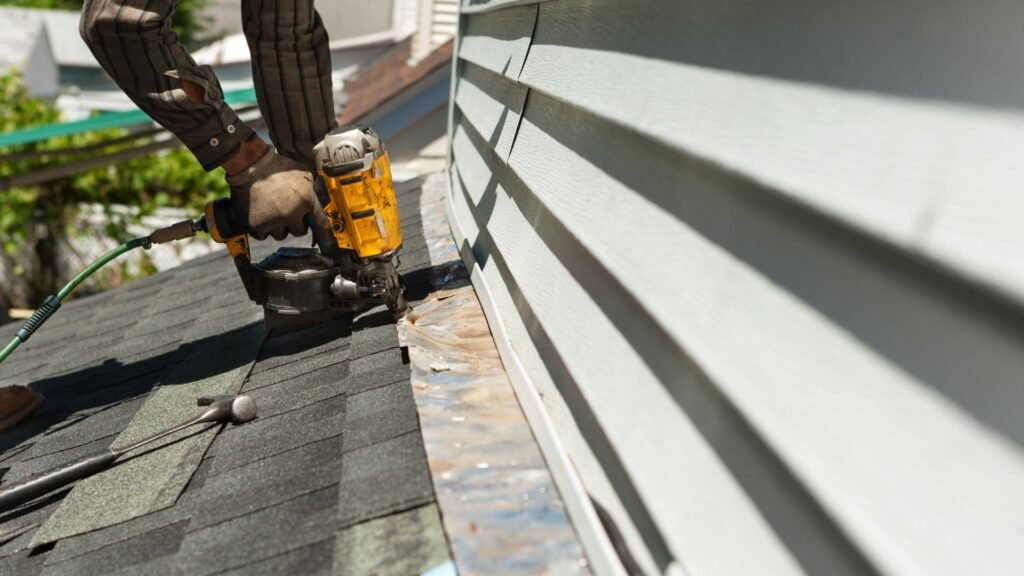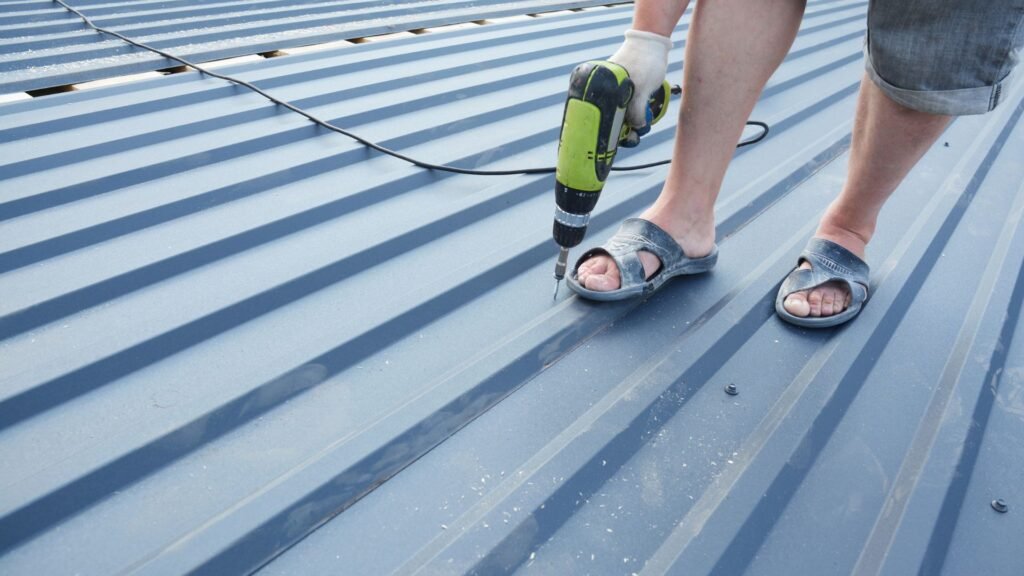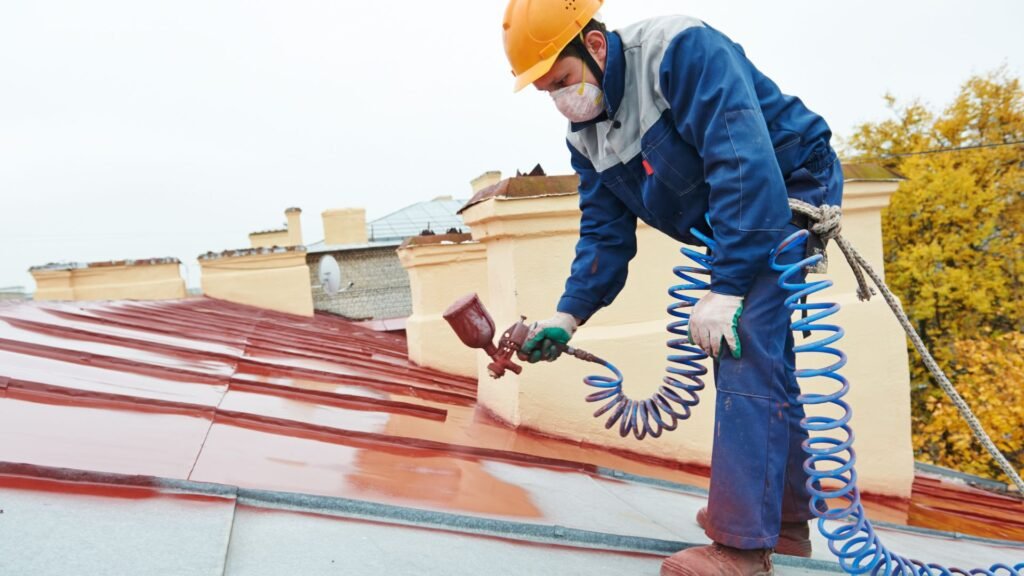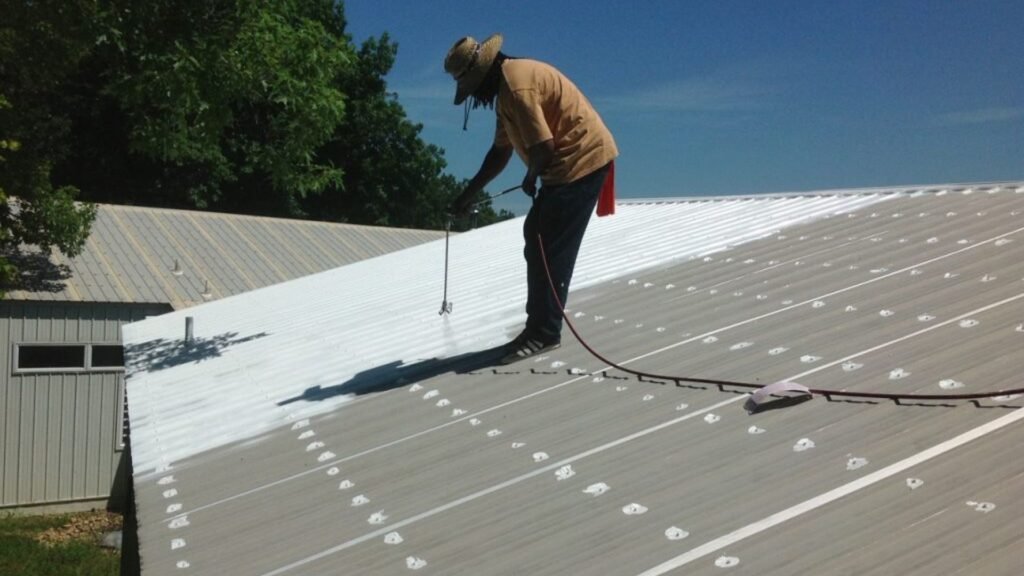Welcome to your go-to guide for finding the best roof paint in NZ. Whether you’re upgrading your home’s look or protecting it from harsh weather, choosing the right paint matters. With New Zealand’s strong UV rays, heavy rain, and coastal air, not all paints hold up the same. In this post, you’ll learn what to look for, which brands are worth your money, and how to get the job done right, whether you’re doing it yourself or hiring a pro.
The best roof paints in NZ include Resene Summit Roof, Dulux Roof & Trim, Wattyl Solagard, and Shieldcoat Roofbond. These options offer strong UV protection, weather resistance, and long-lasting color, ideal for NZ’s harsh climate. Choose based on your roof type, durability needs, and budget.
Table of Contents
Why Roof Paint Matters In New Zealand
New Zealand homes face some of the harshest weather conditions in the world. From strong UV rays and salty coastal air to heavy rain, snow, and fluctuating temperatures, your roof takes the brunt of it all. That’s why choosing the right roof paint, and maintaining it, can make a big difference in how well your home stands up to these challenges.
UV exposure is one of the biggest threats to roof surfaces in New Zealand. With high levels of sun radiation year-round, unprotected roofing materials can fade, crack, or become brittle over time. A high-quality roof paint with UV resistance helps block harmful rays, keeping your roof cooler and extending its lifespan.
If you live near the coast, salt in the air can be just as damaging. Coastal air speeds up corrosion, especially on metal roofs. A strong roof coating acts as a barrier, shielding the surface from salt particles and preventing rust from forming. This protection keeps maintenance costs down and avoids early replacement.
Rain and snow also pose a risk. Without proper sealing, water can seep into small cracks and lead to leaks, mold growth, or structural damage. Roof paint designed for waterproofing creates a tight seal over the entire surface, helping water run off quickly and keeping your roof dry underneath.
Beyond protection, roof paint also plays a role in your home’s resale value. A freshly painted roof instantly boosts street appeal and gives the impression of a well-maintained property. Potential buyers often see a solid roof as a sign that the rest of the home has been looked after, making your property more attractive in the market.
In short, roof paint in New Zealand isn’t just cosmetic, it’s essential for long-term durability, weather protection, and preserving your home’s value. Whether you live inland, in the hills, or by the sea, investing in the right paint means fewer problems and more peace of mind.

Key Features To Look For In Roof Paint
Choosing the right roof paint isn’t just about color, it’s about protecting your home from the elements, extending your roof’s life, and making sure the job lasts. Before you buy, here are the most important features to look for in roof paint, especially for homes in New Zealand.
UV Resistance
New Zealand has some of the highest UV levels in the world. That means your roof is exposed to intense sunlight for long periods. A roof paint with strong UV resistance will help prevent fading, chalking, and surface damage. It keeps your roof color vibrant and your coating intact, even under extreme sun exposure. This is especially important for lighter roofs and homes in northern regions with higher sun hours.
Weatherproofing (Wind, Rain, Snow)
The paint needs to withstand New Zealand’s unpredictable weather, from coastal rain and mountain snow to strong winds. Good roof paint forms a flexible, water-resistant layer that prevents moisture from seeping into cracks or under flashings. It also resists peeling or cracking when exposed to rapid temperature changes or gusty conditions. If you live in areas like Wellington or the South Island, strong weatherproofing should be a top priority.
Reflective/Insulating Qualities
Some roof paints are designed to reflect sunlight instead of absorbing it. These reflective coatings help keep your home cooler during summer by lowering surface temperatures. That can reduce your reliance on air conditioning and improve overall energy efficiency. This feature is especially helpful in warmer parts of NZ or for homes with black or dark-colored roofs.
Adhesion And Durability
A roof paint’s ability to stick well to the surface, and stay put over time, is critical. High-adhesion paints form a tight bond with your roof, even on older or slightly porous surfaces. Durability ensures the paint can resist wear, erosion, and damage for years, with minimal fading or breakdown. The longer the paint holds up, the less maintenance you’ll need to do.
Eco-Friendliness And Low VOC
Low-VOC (Volatile Organic Compounds) paints release fewer harmful fumes, making them safer for you, your family, and the environment. Choosing eco-friendly paint helps reduce air pollution and health risks during application. It’s also an important factor for anyone painting in residential areas or looking for sustainable home improvements.
Suitable For Different Roof Materials
Not all roof paints work on every surface. Some are made for metal roofs, while others are best for concrete tiles or asphalt. Always check the label or product specs to see if the paint matches your roof type. Using the wrong kind can lead to peeling, bubbling, or poor coverage. If your home has a mixed-material roof, look for a paint that works across multiple surfaces.
These features aren’t just technical, they affect how well your roof performs, how much you’ll spend on maintenance, and how good your home looks from the street. When in doubt, talk to a local supplier or roofing expert who knows what works in your region. Choosing the right roof paint now will save you time, money, and headaches later.

Best Types Of Roof Paint (By Material)
Choosing the right roof paint starts with knowing your roof type. Not all paints work on every surface. Each material, metal, tile, concrete, or bitumen, reacts differently to weather, moisture, and heat. That’s why using the correct paint for your specific roof ensures longer protection, better adhesion, and a cleaner finish. Here’s what works best by material:
For Metal Roofs
Metal roofs are common in many New Zealand homes, especially in rural and coastal areas. They handle wind and rain well, but without the right paint, they can rust or fade under harsh sun exposure.
The best choice here is acrylic-based paint or epoxy-modified coatings. These options offer strong adhesion to metal and create a flexible layer that resists cracking and peeling. Look for rust-inhibiting formulas, which are designed to block corrosion and extend the roof’s life. A good primer under the topcoat makes a big difference for long-term performance.
For Concrete Or Tile Roofs
Concrete and tile roofs absorb moisture and can develop surface cracks over time. They need a coating that both seals and breathes.
Go with elastomeric paint, which is known for its flexible, waterproof finish. It stretches slightly with the surface, making it perfect for older roofs that might expand or contract. You should also consider breathable sealers with color pigments. These coatings allow moisture to escape while keeping water out, important in damp or coastal areas of New Zealand.
For Asphalt Or Bitumen Roofs
Asphalt and bitumen are less common in residential roofing but often used in flat or low-slope areas. These surfaces can be oily, sticky, and more heat-absorbing than other materials.
In this case, solvent-based coatings are ideal. They stick well to oily or sticky surfaces and are designed to hold up under direct sun. You may also want to apply waterproofing emulsions, which protect against pooling water and UV breakdown. These paints are typically thicker and require special rollers or sprayers for even application.
Short Tip
Always match the paint type to your roof material. Using the wrong paint can lead to poor adhesion, early fading, or even peeling within months. Read product labels carefully or ask a local paint supplier for guidance before you buy.
By picking the right roof paint for your surface, you’ll not only get better results, you’ll also protect your investment for years to come.

Top Roof Paint Brands In NZ (With Pros & Cons)
Choosing the right roof paint brand can make a big difference in both the look and protection of your home. In New Zealand, where roofs are exposed to strong UV rays, wind, rain, and salt air, it’s important to select paint that’s made to handle tough weather. Below are some of the top roof paint brands available in NZ, along with their pros and cons to help you make an informed decision.
Resene Summit Roof
Resene is a New Zealand brand known for developing products that suit local conditions. Summit Roof is one of their top offerings, designed specifically for roofs exposed to harsh sunlight and seasonal weather shifts.
Pros:
- High resistance to UV damage, which is crucial in NZ’s sunny regions
- Eco Choice is approved and low in VOCs, making it better for the environment
- Easy to apply with brushes, rollers, or sprayers
Cons:
- Comes at a higher price compared to standard roof paints
- May not be the most budget-friendly option for large-scale projects
Resene Summit Roof is a solid choice for homeowners who want quality and sustainability, especially if you’re aiming for a longer-lasting finish.
Dulux Roof & Trim
Dulux is a well-known brand with wide availability and strong customer support. Its Roof & Trim paint is designed to be used on both roofs and exterior trims, offering flexibility in home projects.
Pros:
- Backed by a long warranty, offering peace of mind
- Available in a wide color range, suitable for both modern and traditional homes
- Self-priming on most surfaces, reducing prep work
Cons:
- Darker colors may require a second coat for full coverage
- Slightly more expensive than lower-tier paints
Dulux Roof & Trim is ideal if you’re after trusted performance with the convenience of fewer products needed for multiple surfaces.
Wattyl Solagard Roof
Wattyl Solagard is designed to handle coastal conditions, making it a popular choice for homes near the ocean or in areas with high rainfall. It offers dependable protection at a more accessible price point.
Pros:
- Strong weatherproofing against rain, salt air, and UV
- More affordable than premium brands
- Available in many colors to suit different roof styles
Cons:
- May not last as long as high-end alternatives like Resene or Dulux
- Surface prep is important for best results
Wattyl Solagard Roof is a practical choice if you’re painting on a budget but still want decent protection and appearance.
Shieldcoat Roofbond
Shieldcoat Roofbond is built with tradespeople in mind but is also available to homeowners. It’s particularly strong on metal roofs and performs well in varied weather conditions.
Pros:
- Excellent adhesion, especially on metal surfaces
- Formulated to expand and contract with temperature shifts
- Offers high gloss and color retention
Cons:
- Less known among everyday homeowners
- Often marketed more toward professional painters than DIYers
If you’re painting a metal roof and want professional-grade results, Shieldcoat Roofbond offers strong durability and a smooth finish.
Optional Table: Roof Paint Comparison
| Brand | Best For | Key Benefits | Drawbacks |
| Resene Summit Roof | High UV areas | Eco-friendly, long-lasting | Higher cost |
| Dulux Roof & Trim | General use | Trusted brand, self-priming | May need second coat |
| Wattyl Solagard | Coastal/weather zones | Budget-friendly, weatherproof | Shorter lifespan |
| Shieldcoat Roofbond | Metal roofs | Strong adhesion, high gloss | More trade-focused |
Each brand brings something different to the table. Whether you’re looking for value, durability, eco-friendliness, or ease of use, choosing the right roof paint starts with knowing what matters most to your home and climate.

How Much Roof Paint Do You Need?
Figuring out how much roof paint you need is one of the most common questions homeowners in New Zealand ask before starting a painting project. The amount depends on your roof size, material, and condition. Calculating this correctly helps you avoid overspending or running short halfway through the job.
Coverage Guide (sqm per Litre)
Most roof paints in New Zealand offer a coverage rate of 8 to 10 square metres per litre, per coat. This can vary slightly depending on the brand and the paint’s consistency. For example, a 10-litre bucket of high-quality acrylic roof paint may cover 80 to 100 square metres with one coat. If your project needs two coats, you’ll need to double the amount.
Always check the manufacturer’s label for exact coverage information. Some paints designed for porous surfaces may have a lower coverage rate, closer to 6–7 sqm per litre. If you’re using a primer, that may have a different coverage rate altogether.
Factors That Affect Paint Usage
Several factors can impact how much paint you actually need:
- Surface texture: Rougher roofs like concrete tiles absorb more paint than smooth metal roofs.
- Material type: Porous materials like clay or concrete will soak up more product compared to coated steel or iron.
- Roof condition: Older, weathered, or previously unpainted roofs often need more paint. They may also need extra coats to ensure a uniform finish.
- Color change: Painting a dark roof with a light color usually requires more coats, especially if you skip priming.
- Application method: Using a sprayer often uses more paint than a roller due to overspray and waste.
Doing a proper inspection of your roof before painting helps you make a more accurate estimate. Measure the total area and assess whether patching, priming, or heavy cleaning is needed first.
Budget Estimation For Average NZ Roof Size
An average house in New Zealand has a roof size between 120 to 180 square metres. Here’s a rough cost estimate based on that:
- Paint requirement (2 coats):
120 sqm x 2 coats ÷ 10 sqm per litre = 24 litres
180 sqm x 2 coats ÷ 10 sqm per litre = 36 litres - Paint cost (example at $80 per 10L):
For 24 litres: $80 x 2.4 = $192
For 36 litres: $80 x 3.6 = $288
Keep in mind, this estimate is for paint only. You may also need primer, cleaning supplies, brushes, rollers, or a spray gun. If you’re hiring a professional, labor costs typically range from $2,000 to $5,000 depending on location, roof height, and preparation work.
Planning your paint usage based on accurate roof size, product coverage, and surface condition helps you stay on budget and avoid surprises. If unsure, many hardware stores and paint suppliers in NZ offer free in-store consultations or online calculators to help you get it right.
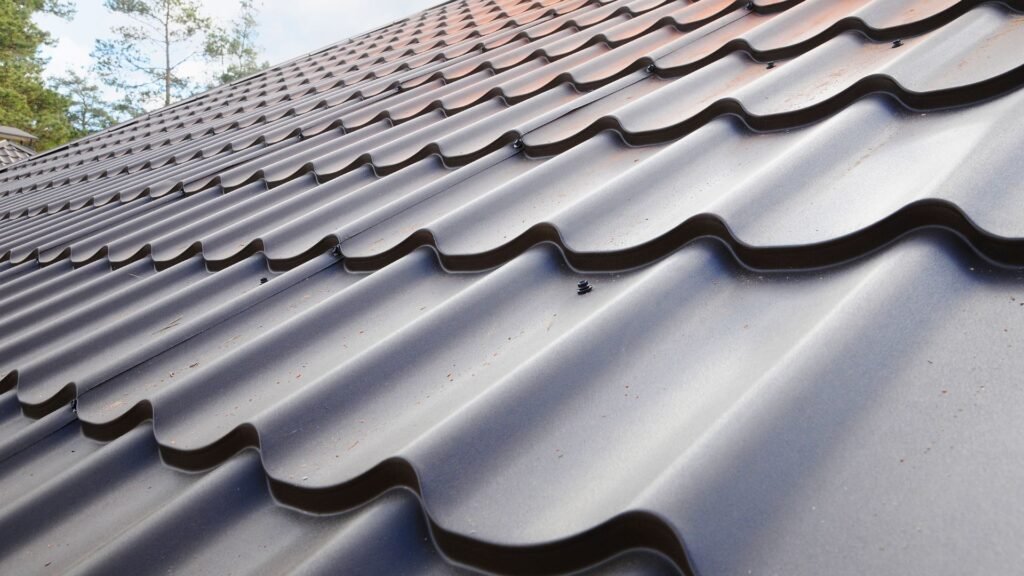
DIY Vs. Hiring A Pro In NZ
Painting your roof is a major project, and choosing between doing it yourself or hiring a professional can make a big difference in results, cost, and long-term durability. Let’s look at when DIY makes sense, the risks involved, and how hiring a trusted local painter might actually save you time and money in the long run.
When DIY Makes Sense
If you’re confident with tools, comfortable working at heights, and your roof is in good condition, painting it yourself can be a smart way to cut costs. Many Kiwi homeowners go the DIY route to save on labor, especially when the roof is small, has a gentle slope, or was previously painted and just needs a fresh coat. If you’ve got the right equipment, like safety harnesses, ladders, and a quality sprayer or roller, you can get the job done over a weekend. Just make sure you follow the product’s application instructions closely and work in the right weather conditions.
Risks Of Poor Application
DIY isn’t always the best idea, especially if the roof is steep, rusted, or structurally worn. Poor preparation and application can lead to peeling, flaking, or even water leaks down the track. Skipping primer, applying paint on a damp surface, or using the wrong product for your roof type are common mistakes. In some cases, DIY jobs end up costing more because they require a full redo within a year or two. And let’s not ignore the safety risks. Falls from roofs are one of the most common accidents in home improvement projects across New Zealand.
Cost Comparison: DIY Materials Vs. Professional Service
At first glance, DIY seems cheaper. A typical metal or tile roof might need 10 to 20 liters of paint, which can cost $300 to $600 depending on the brand. Add another $100 to $200 for primer, brushes, rollers, and safety gear. If you already have tools, you could repaint your roof for under $1,000.
Hiring a professional, on the other hand, usually starts at $2,000 and can go beyond $5,000 depending on the size and condition of the roof. That cost includes materials, surface preparation, labor, safety equipment, and warranties. While it’s a higher upfront cost, you’re paying for experience, speed, and peace of mind.
Tips For Finding A Trusted Local Painter
If you decide to hire a professional, take the time to choose someone reliable. Look for local roof painters with verified reviews on platforms like Builder Connect, Google, or Trade Me Services. Ask for references, check their portfolio, and confirm they’re insured and safety compliant. A quality contractor will inspect your roof before quoting, explain the process, and recommend the best product for your roof material and environment. Don’t always go with the cheapest quote, go with the one that shows clear attention to detail and includes guarantees.
In the end, the right choice depends on your roof, budget, and confidence. Whether you DIY or call in a pro, make sure the job is done right the first time. That’s the key to a roof that not only looks great but lasts for years.

How To Prep Your Roof For Painting
Proper roof preparation is essential before painting, especially in New Zealand where roofs face constant exposure to strong UV rays, rain, wind, and coastal air. Skipping this step can lead to poor adhesion, bubbling, or a short-lived finish. Below is a clear guide on how to get your roof ready for paint so your efforts last longer and look better.
Safety First
Before doing any work on your roof, make safety your top priority. Use a sturdy ladder that sits flat on solid ground. If your roof has a steep pitch or is two storeys high, wear a safety harness that’s secured to a stable anchor point. Always wear non-slip boots and heavy-duty gloves to protect your hands while cleaning or handling tools. If you’re unsure or uncomfortable working at heights, consider hiring a professional. Safety is not something to compromise.
Clean The Surface Thoroughly
Dirt, moss, lichen, mold, and loose debris prevent paint from sticking properly. Use a pressure washer to remove surface grime, paying close attention to any stubborn patches. If mold or moss is present, apply a moss and mold treatment and allow it to sit as directed before rinsing it off. Make sure the roof is completely dry before moving to the next step. A clean surface improves adhesion and extends the life of the paint.
Repair Any Damage Before Painting
Inspect the roof for cracks, rust spots, loose nails, or damaged flashing. Fill small cracks with roof sealant or patching compound. Use a wire brush or rust remover on corroded metal, then coat it with a rust-inhibiting primer. Replace or repair any loose flashing, ridge caps, or damaged tiles to prevent water leaks later. Painting over damaged areas won’t solve the problem, it will only hide it temporarily.
Use The Right Primer Based On Your Roof Type
Primer isn’t optional, it’s a key step that helps the paint bond to the surface and improves durability. The type of primer you need depends on your roof’s material. For metal roofs, use a rust-preventing metal primer. For concrete tiles or porous surfaces, choose a masonry or roof tile primer that seals and creates a strong base for the topcoat. Don’t skip primer even if the paint label says “self-priming,” especially if the surface is aged or previously unpainted.
Proper preparation leads to better-looking, longer-lasting results. It also saves you money and time in the long run by reducing the chances of early paint failure. Taking the time to prep the right way sets the foundation for a smooth, even finish that can stand up to New Zealand’s weather for years.

Step-By-Step: How To Paint Your Roof (Quick Guide)
Painting your roof is a practical way to improve your home’s appearance and protect it from New Zealand’s harsh climate. But to get long-lasting results, you need to follow the right process. This quick guide will walk you through the essential tools, application methods, ideal timing, and drying periods so your roof looks great and holds up for years.
Tools And Materials List
Before you start, gather all the necessary tools and materials. Having everything ready will make the job safer and more efficient. Here’s what you’ll need:
- Roof paint suitable for your roof type (metal, tile, concrete, etc.)
- Primer or sealer (if required for your surface)
- Paint sprayer or long-handled roller
- Paintbrush for edges and tricky areas
- Ladder or scaffold
- Roof harness and safety gear
- Pressure washer or stiff broom
- Cleaning solution (for removing mold or mildew)
- Sandpaper or wire brush (for rust or flaky paint)
- Drop sheets and masking tape (to protect gutters and trims)
Always read the product label to confirm if a primer or undercoat is needed for your specific paint.
Application Tips (Roller Vs. Sprayer)
You have two main options for applying roof paint: a roller or a sprayer. Each has pros and cons depending on your experience, roof shape, and time.
- Using a Roller:
Rollers are ideal for smaller or flat roofs. They’re affordable, easy to control, and allow for even coverage. Use a long pole roller to reduce strain. You’ll need to work in sections and may have to apply multiple coats for full coverage. - Using a Sprayer:
A paint sprayer is best for large, complex, or corrugated roofs. It covers faster and reaches gaps that rollers can’t. You’ll need to mask off areas like gutters and windows to avoid overspray. Spraying also requires a steady hand and good weather, as wind can affect accuracy.
No matter which method you choose, always start from the highest point and work down. Apply in thin, even coats to avoid drips or patchy areas.
Best Time Of Year To Paint In NZ
Timing is everything when painting your roof. In New Zealand, the best time to paint is during late spring to early autumn, typically between October and March. These months offer mild temperatures, lower humidity, and more consistent dry weather.
Avoid painting on days that are:
- Windy
- Wet or about to rain
- Over 30°C or under 10°C
- Too humid (can affect drying and adhesion)
Early mornings or late afternoons are often better, as they avoid peak heat that could cause the paint to dry too quickly.
Drying And Curing Times
Understanding how long roof paint takes to dry and cure is key to a strong, even finish. Each product has slightly different drying times, so always check the label. But here’s a general guide:
- Touch dry: 1 to 2 hours
- Recoat time: 4 to 6 hours (some products require 12+ hours)
- Fully cured: 5 to 7 days
Avoid walking on the roof or exposing it to rain until the paint has cured properly. Rushing the process can lead to peeling, bubbling, or uneven color.
If weather changes during painting, pause and let the surface dry completely before applying the next coat. Patience during this phase ensures your paint job lasts for years.

Common Mistakes To Avoid
When it comes to painting your roof, cutting corners can lead to disappointing results. Many homeowners rush the process or skip key steps, thinking it will save time or money. But those shortcuts often lead to poor adhesion, early peeling, or water damage down the track. Below are some of the most common mistakes people make when painting their roofs in New Zealand, and how you can avoid them.
Painting Over Dirty Or Damp Surfaces
This is one of the biggest causes of paint failure. If your roof is covered in dirt, moss, mold, or moisture, the paint simply won’t stick well. Even if the paint looks fine for the first few weeks, it’s likely to blister, flake, or wash off sooner than expected. Always clean the roof thoroughly with a pressure washer and allow it to dry completely before painting. If possible, wait for two consecutive dry days to ensure moisture has evaporated fully.
Choosing The Wrong Paint For The Material
Not all roof paints are made for every surface. What works well on concrete tiles may not perform on corrugated metal. Using the wrong product can lead to poor coverage, rust, or water absorption issues. Read the product label carefully and choose a paint that’s specifically formulated for your roof type. If you’re unsure, contact the manufacturer or consult with a roofing professional to match the paint to your material.
Skipping Primer
Primer might seem like an optional step, but it plays a crucial role in helping the paint bond to the roof surface. It also adds a layer of protection and improves the overall finish. Skipping primer often results in uneven coverage or faster wear and tear, especially on older or more porous surfaces. Always use the recommended primer before applying your top coat, particularly on metal or tile roofs.
Ignoring Weather Forecasts
Timing is everything when it comes to roof painting. If rain hits your freshly painted roof, it can wash away uncured paint, cause streaks, or trap moisture under the surface. High winds can also blow dust or debris onto wet paint. Always check the weather forecast before you start. Choose a stretch of dry, mild weather, ideally with low humidity and temperatures between 15°C and 25°C. Avoid painting in direct sunlight or during extremely hot days, as the paint may dry too quickly and form a weak surface.
By taking the time to prepare properly and avoid these mistakes, you’ll get better, longer-lasting results, and protect your home for years to come.
Need help choosing the right roof paint? Visit us to explore trusted solutions, expert advice, and affordable services tailored for NZ homes.

FAQs: About Best Roof Paint In NZ
What is the best roof paint for New Zealand weather?
Resene Summit Roof and Dulux Roof & Trim are top-rated for NZ’s harsh climate. They offer UV resistance, waterproofing, and long-lasting color retention.
Can I paint my roof myself, or should I hire a professional?
You can paint your roof if you have the right tools and safety gear. But for steep or damaged roofs, hiring a pro is safer and ensures better results.
How long does roof paint typically last in NZ?
Most quality roof paints last 8–15 years, depending on the product, roof condition, and how well the surface was prepared before painting.
Do I need to clean the roof before painting it?
Yes. You must clean the roof thoroughly using a pressure washer or scrubber to remove dirt, mold, and moss. Skipping this step affects paint adhesion.
What type of paint works best on metal roofs?
Acrylic-based paints or epoxy-modified coatings with rust inhibitors are ideal for metal roofs. They resist corrosion and bond well to the surface.
How much roof paint will I need?
A standard roof may require 10–20 liters depending on the size, roof texture, and how many coats are applied. Check the coverage rate on the label.
What time of year is best for painting a roof in NZ?
Late spring or early summer is best. Avoid rainy, windy, or very cold days to ensure proper drying and curing of the paint.
Will painting my roof help lower energy bills?
Yes. Light-colored or reflective roof paints can reduce heat absorption, helping to keep your home cooler and reduce air conditioning costs.
Do I need a primer before applying roof paint?
In most cases, yes. Especially on metal or porous surfaces, primer improves adhesion and helps the paint last longer.
Can I paint over old roof paint?
Yes, but only if the existing paint is in good condition. Sand or scrape off any peeling areas and spot-prime before applying a new coat.
Conclusion
Choosing the best roof paint in NZ comes down to knowing your roof type, understanding your local climate, and working within your budget. Metal roofs often need rust-resistant coatings, while tile or concrete roofs benefit from breathable, elastomeric formulas. In regions with high UV exposure, like many parts of New Zealand, UV-resistant paint is a must to prevent fading and damage. If you’re near the coast, go for a paint that can withstand salt air and moisture. Prices vary by brand and quality, so weigh long-term durability over short-term savings. Whether you plan to do it yourself or hire a professional, make sure to research, read labels, and match the paint to your specific needs. If you’re still unsure which roof paint is right for you, don’t guess, speak with a local expert or supplier to get personalized recommendations that fit your home and climate.
About the Author:
Mike Veail is a recognized digital marketing expert with over 6 years of experience in helping tradespeople and small businesses thrive online. A former quantity surveyor, Mike combines deep industry knowledge with hands-on expertise in SEO and Google Ads. His marketing strategies are tailored to the specific needs of the trades sector, helping businesses increase visibility and generate more leads through proven, ethical methods.
Mike has successfully partnered with numerous companies, establishing a track record of delivering measurable results. His work has been featured across various platforms that showcase his expertise in lead generation and online marketing for the trades sector.
Learn more about Mike's experience and services at https://theleadguy.online or follow him on social media:



